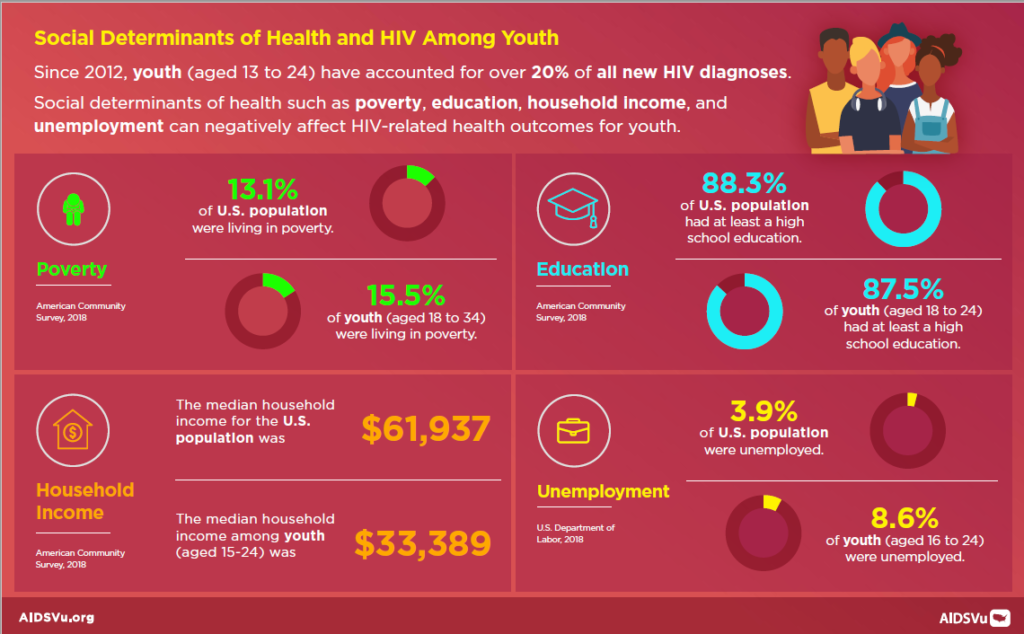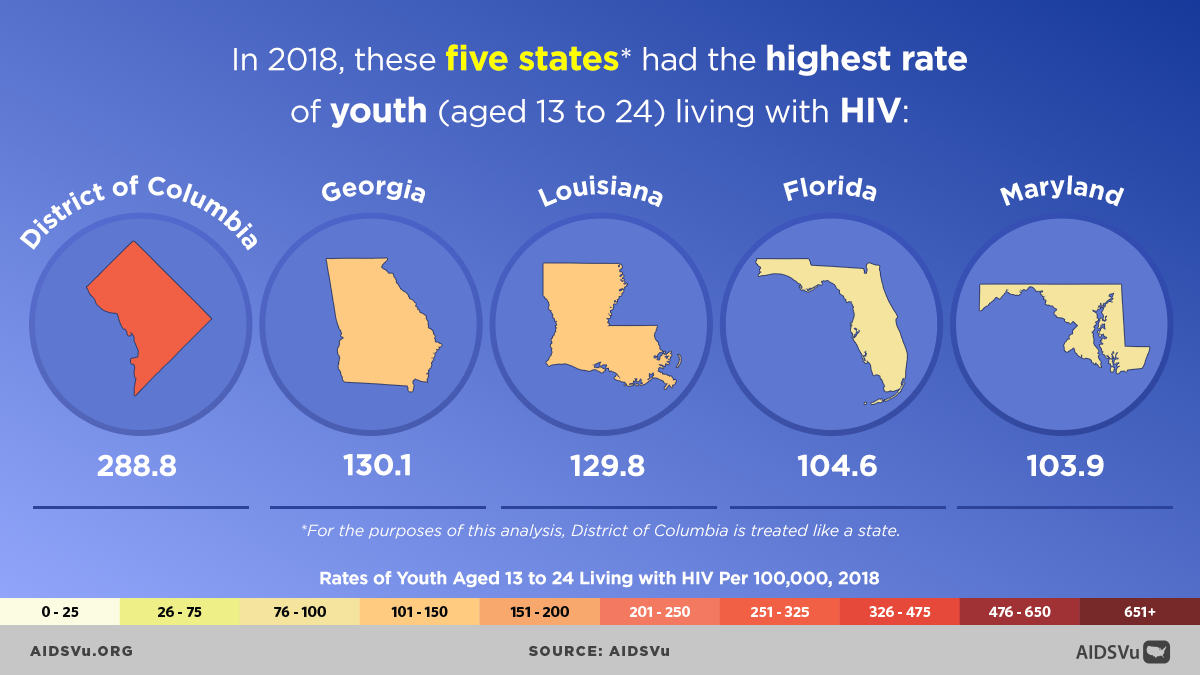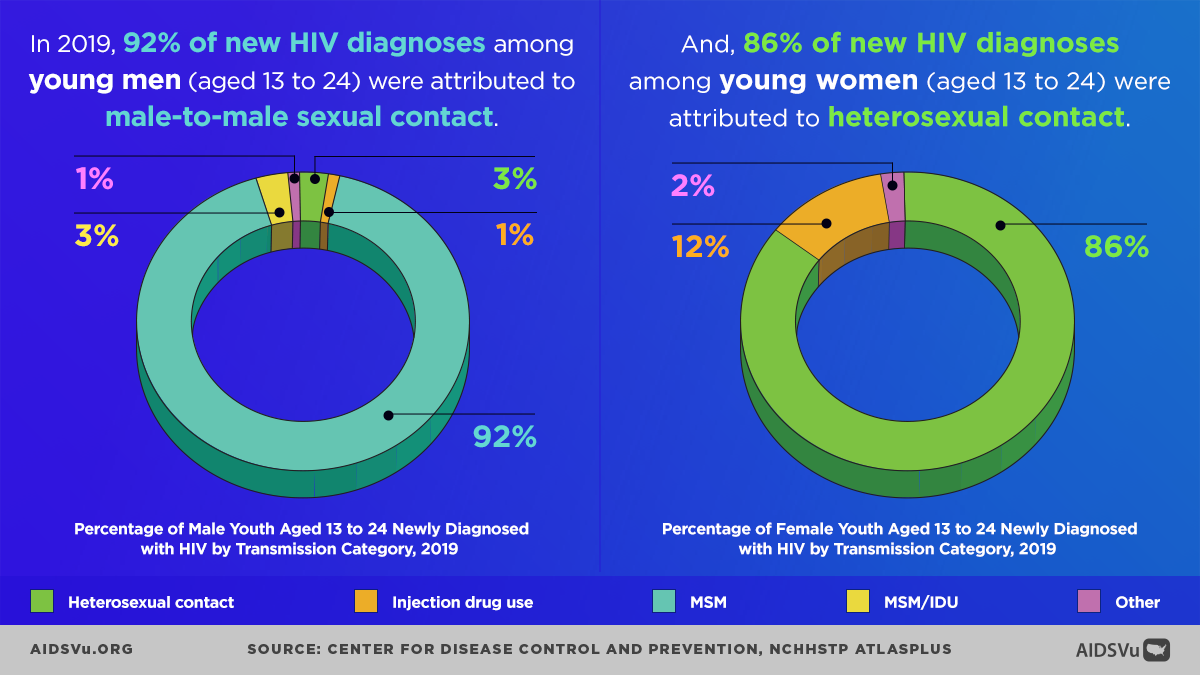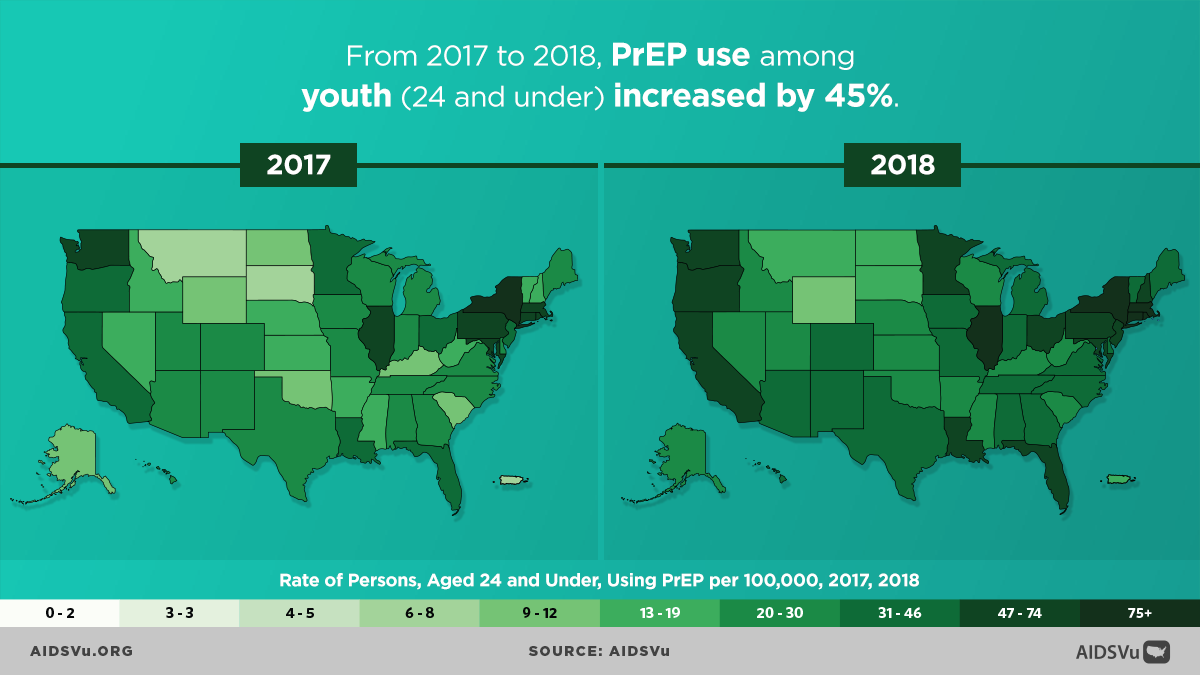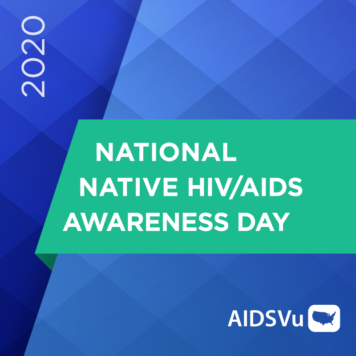April 10 is National Youth HIV/AIDS Awareness Day (NYHAAD), a day to educate the public on the impact of HIV on youth, especially among communities of color. This NYHAAD, we recognize the resilience of youth and young leaders fighting the HIV epidemic across the country as they highlight the urgent need to raise awareness on HIV prevention and care among their peers.
Many youth who are at risk for HIV receive insufficient sex education and experience health-related inequities that are linked to low testing rates, high rates of sexually transmitted diseases, and low condom use. These factors contribute to the fact that 44% of youth with HIV were undiagnosed and only 60% of youth with HIV were virally suppressed in 2018 – the highest and lowest rates of any age group for those indicators. In 2019, despite a 4% decrease, youth still accounted for more than 20% of all new HIV diagnoses nationwide.
Out of those new diagnoses among youth, male-to-male sexual contact and heterosexual contact made up 92% and 86% of all new HIV diagnoses among young men and women respectively, underscoring an important need to raise awareness on HIV prevention.
Among youth, communities of color are disproportionately affected by HIV more than other groups. Compared to their White and Hispanic/Latinx counterparts, young Black men and women experience greater rates of HIV.
- In 2018, Black men represented 55% of all young men living with HIV.
- In the same year, Black women represented 63% of all young women living with HIV.
Pre-exposure prophylaxis (PrEP) is a valuable tool in HIV prevention – from 2017 to 2018, there was a 45% increase in PrEP use among youth. Despite this promising trend, this age group still experiences lower rates of PrEP use compared to their burden of HIV.
The HIV epidemic among youth is impacted by a wide range of health disparities and cultural factors, including stigma and socioeconomic challenges. Social determinants of health such as poverty and unemployment can negatively affect HIV-related health outcomes by creating competing priorities and hindering access to basic health care:
- In 2018, 15.5% of youth aged 18 to 34 were living in poverty, compared to the 13.1% of the U.S. population.
- In the same year, 8.6% of youth aged 16 to 24 were unemployed, compared to the 3.9% of the overall U.S. population.
To learn more about how the HIV epidemic impacts the youth, explore these AIDSVu resources:
- Visualize HIV data stratified by age on the city-, county-, and state-level on AIDSVu’s interactive maps.
- Explore our local data profiles to learn about HIV/AIDS in your area.
- Find available HIV testing and care services near you with AIDSVu’s service locators.
- Read expert-led Q&A blogs to deepen your understanding of HIV/AIDS among youth.
- Share our infographics with your networks to raise awareness.


